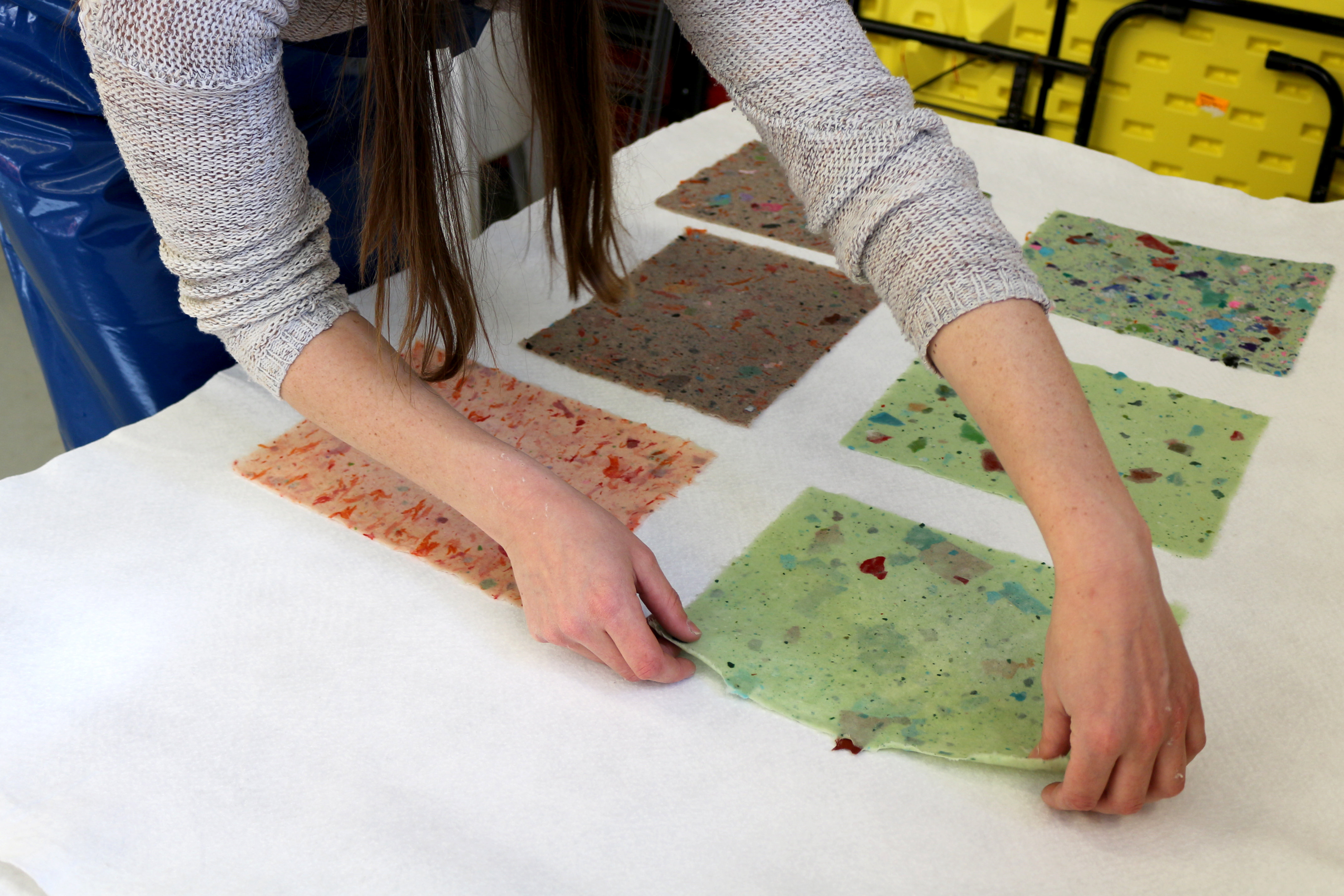Lelia Byron is currently undergoing her Art for the Environment Residency at Banff Centre, Canada.
1. Exploration at Banff Centre for Arts and Creativity
Exploration is one of the best words to describe my time at Banff. From the long walks through forests, lakes, and mountains, to my many experiments with papermaking and ceramics, to learning about the work of the other writers, composers, musicians, and artists at the residency, every activity and project I embarked on during this time involved venturing into unknown terrain, ascending steep paths, and amassing concentration so as not to lose balance during cold and silent days.
I came to Banff Centre for Arts and Creativity with the idea to create an installation of a physical map that can be walked through, but I wasn’t exactly sure what I wanted this installation to be a map of. At Banff though, I felt inspired by the huge quantity of protected nature in the national park--the bright vermillion bodies of water, the peaceful deer, the tall and narrow evergreen trees, the Columbian ground squirrels who talked to each other all day in high pitched squeaks. I made sketches of all the different shapes and objects that I saw repeating, and a list of words that described what I would see as I walked. One word I kept coming back to was “ecosystem."
At some point during my residency, I saw a parallel between the ecosystem I was encountering at Banff and the alternate worlds that an artist creates. In my work, I frequently talk about systems (and systemic problems) and connections (and interconnectedness). While thinking about these parallels, I began to realize that the residency was a perfect opportunity to reflect on what I have been doing as an artist and where I am trying to go in my practice. Artists can be problem solvers and innovators creating different maps for others to explore, imagine, question, challenge, and use as a reference point for connections. Maps establish an invisible connection between their makers and those who read them in the future. They are like messages that say, “I have been there. This is what I have seen. This is how it felt.”



2. Papermaking
During the residency, I wanted to try to learn about new ways of making and to work with equipment that I do not have access to in my regular studio practice. I found the papermaking process to be fascinating. A time consuming and laborious process, it involves beating the paper pulp, combining the pulp with water in a vat, dipping or pouring the paper pulp into a mold and deckle, draining the water, “couching” or transferring the wet paper pulp from the mold, compressing any remaining water from the stacks of paper sheets in a press, and drying the sheets while they are being weighed down. There are many variations on papermaking methods and ways to experiment. For example, you can even create “secret” paper by laminating something within two sheets of wet paper. Only when held up to the light would the hidden object be visible.
I made many batches of paper, trying out different materials and processes as I went. Starting with cotton linter as a base, I added pressed flowers, leaves, strings, all sorts of different recycled papers, and dyes to my different paper pulps.



3. Experiments with Ceramics: Raku Firing and Mold Making
While at Banff Centre, I had the opportunity to make some ceramic pieces using the raku firing process. It involves taking the ceramic pieces out of the kiln when red hot, placing them in a container with combustibles such as paper or leaves to create smoke, and then cooling the ceramic pieces in water. Each piece came out as a surprise because it is not possible to predict exactly how the smoke will react with the glaze. I made a series of “branches” and “fossils” using this process.
Using roots, plants, and vegetables as forms for inspiration, I also made molds for slip casting. In this method liquid clay is poured into a plaster mold. After some time the exterior layer of the clay will harden, and the remaining liquid clay can be poured out of the mold so that clay object will be hollow once it is dried and separated from the mold.





4. Map of an Artist’s Ecosystem
The shapes, the colors, the branches and the fossils, the fibers, which shake the air I breathe as they fall and reach the ground to form rivers where I see my reflection, the water, which furiously crosses the mountain, the scar that I carry behind my neck.
These are landmarks on a map.
It is the map of my body and of the world that I make as I move.


Thank you to Banff Centre and to UAL Artists for the Environment Residency Programme for this opportunity.
More about the AER Residency
The Art for the Environment Residency Programme (AER) provides UAL graduates with the opportunity to apply for a 2 to 4 week fully funded residency at one of our internationally renowned host institutions, to explore concerns that define the 21st century – biodiversity, environmental sustainability, social economy and human rights.
Founded in 2015, internationally acclaimed artist Professor Lucy Orta, UAL Chair of Art for the Environment – Centre for Sustainable Fashion, launched the programme in partnership with international residency programmes and UAL Post-Grad Community.

